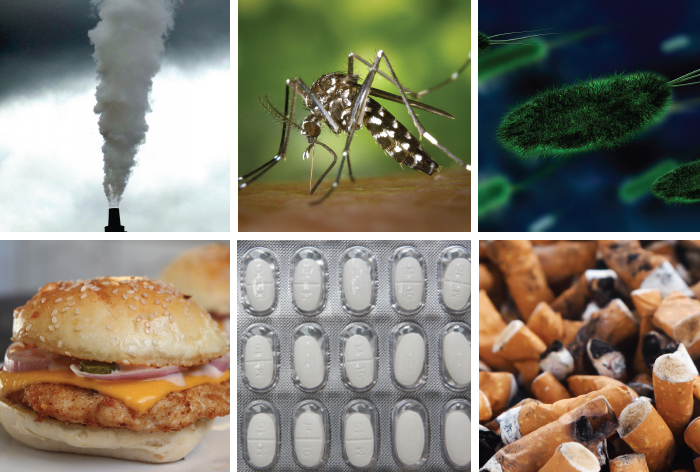
The exposome incorporates factors such as the environment we inhabit, the food we eat, and the drugs we take.
Although genomics has dramatically improved our understanding of the molecular origins of certain human genetic diseases, our health is also influenced by exposures to our surrounding environment. Molecules found in food, air and water pollution, and prescription drugs, for example, interact with genetic, molecular, and physiologic features within our bodies in highly personalized ways. The nature of these relationships is important in determining who is immune to such exposures and who becomes sick because of them.
In the past, methods for studying this interface have been limited because of the complexity of the problem. After all, how could we possibly cross-reference a lifetime’s worth of exposures with individual genetic profiles in any kind of meaningful way? Recently, however, an explosion in the generation of quantitative data related to the environment, health, and genetics — along with new computational methods based in machine learning and bioinformatics — have made this landscape ripe for exploration.
At this year’s South by Southwest Interactive Festival in Austin, Texas, Department of Systems Biology Assistant Professor Nicholas Tatonetti and his collaborator Chirag Patel (Harvard Medical School) discussed the remarkable new opportunities that “big data” approaches offer for investigating this landscape. Driving Tatonetti and Patel’s approach is a concept called the exposome. First proposed by Christopher Wild (University of Leeds) in 2005, an exposome represents all of the environmental exposures a person has experienced during his or her life that could play a role in the onset of chronic diseases. Tatonetti and Chirag’s presentation highlighted how investigation of the exposome has become tractable, as well as the important roles that individuals can play in supporting this effort.
In the following interview, Dr. Tatonetti discusses some of the approaches his team is using to explore the exposome, and how the project has evolved out of his previous research.